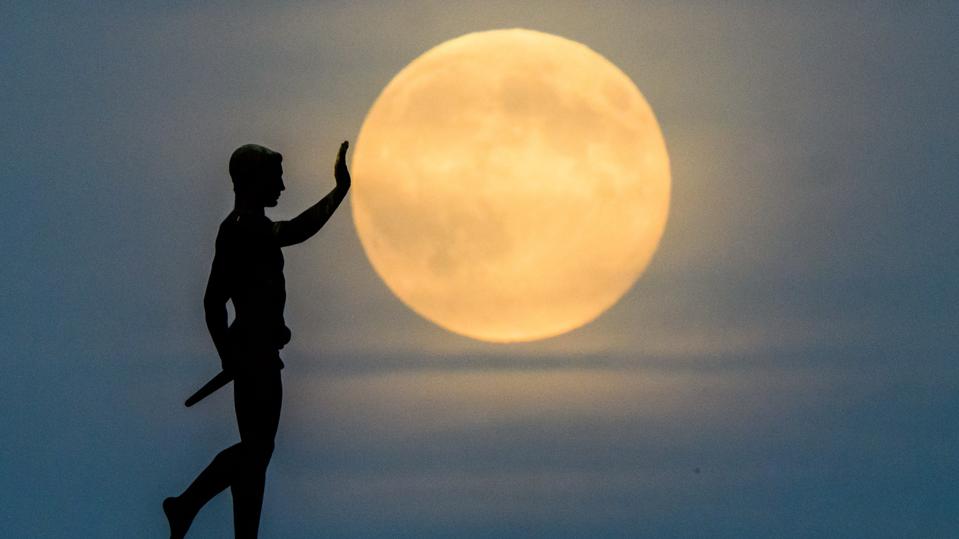Topline
The biggest and brightest full moon of 2025 — and since 2019 — rose during dusk on Wednesday, Nov. 5, captivating skywatchers across the planet. The next one isn’t until early December, but North America has one more chance to catch it as it rises during dusk on Thursday, Nov. 6.
Key Facts
This beaver moon wasn’t just any full moon — it was a supermoon, and not just any supermoon. At 221,818 miles (356,980 kilometers)from Earth, it was the closest full moon since February 2019.
Known as a supermoon because it occurs near perigee — the moon’s closest point to Earth in its slightly elliptical orbit — this event made the moon disk appear about 14% larger and 30% brighter than a micromoon, which happens at the farthest point in orbit.
The full moon officially occurred at 8:19 a.m. EST on Wednesday, Nov. 5, just nine hours after perigee. The most photogenic views came at moonrise.
The beaver moon was the second of three supermoons in 2025. The next full moon, on Dec. 4, will also be a supermoon — just 148 miles (239 kilometers) farther — and will rise slightly higher in the sky.
When To See The Supermoon On Thursday, Nov. 6
On Wednesday, Nov. 5, observers in New York saw the moon rise just 12 minutes after sunset, while in Los Angeles, that happened a minute after sunset. With such a close tie-up of moonrise and sunset times, it means there’s another chance on Wednesday, Nov. 6:
- New York: 5:18 p.m. EST (sunset is at 4:46 p.m. EST)
- Los Angeles: 5:45 p.m. PST (sunset is at 4:55 p.m. PST)
What Is A Supermoon?
While the actual size of the moon doesn’t change, its varying distance alters its apparent size — how big it looks to us. The moon takes 29.5 days to orbit Earth, but it does so not in a circle, but in a slight ellipse. Its distance from Earth varies each month from about 221,500 miles (356,500 km) to 252,700 miles (406,700 km). That 31,000-mile difference affects how large the moon appears in our sky.
Nasa Prepares For Moon Mission In 2026
NASA’s Artemis II — the first crewed mission to the moon since 1972 — could launch as soon as Feb. 5, 2026. The 10-day flight will take four astronauts on a historic flyby of the moon aboard NASA’s Orion spacecraft. The mission will test key life support, navigation, and safety systems and send humans over 5,800 miles (9,000 kilometers) beyond the moon — farther from Earth than any humans have ever been before. It will be the second Artemis mission after Artemis I’s uncrewed lunar test in 2022. If Artemis II is successful, Artemis III will aim to land astronauts near the lunar south pole later this decade.

